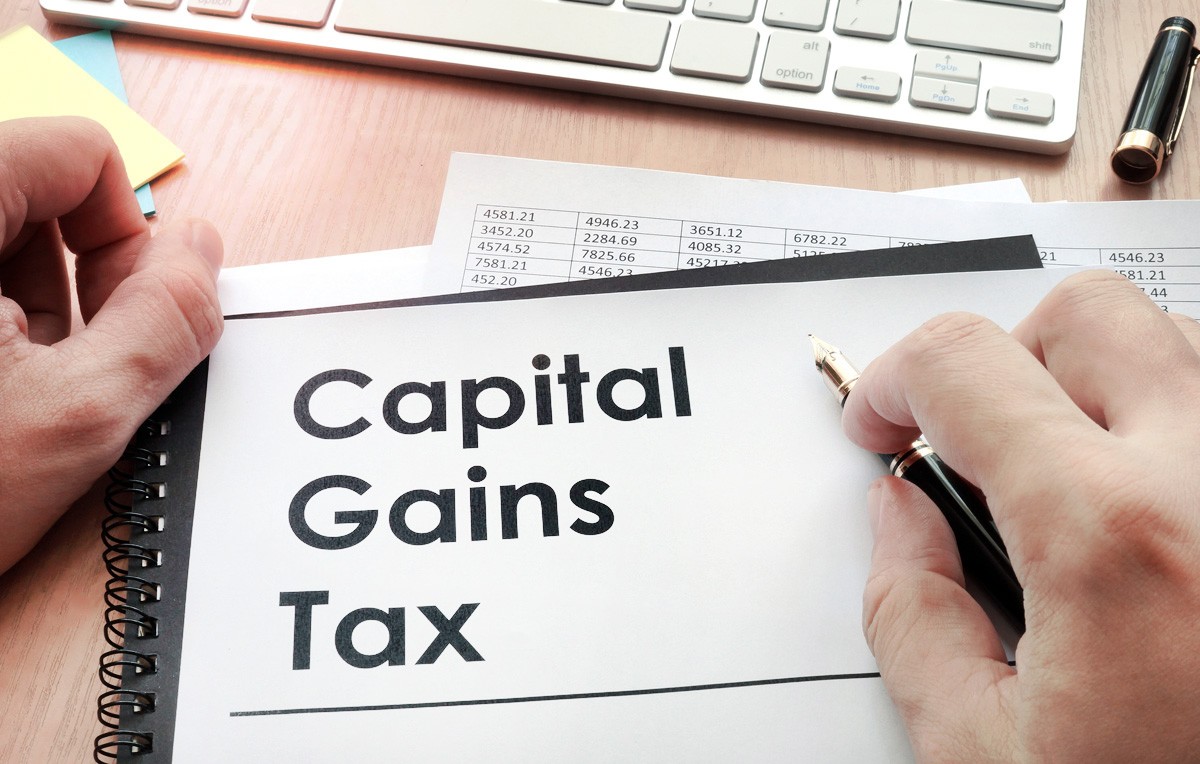Investing in assets such as stocks, real estate, or bonds can be a great way to grow your wealth over time. However, when you sell these assets for a profit, you may be subject to capital gains taxes, which can take a significant bite out of your earnings. Understanding how capital gains taxes work and how to minimize them is essential for maximizing your investment returns and keeping more of your profits.
Here’s a guide to help you understand capital gains taxes and strategies to reduce your tax liability.
1. What Are Capital Gains Taxes?
Capital gains taxes are applied to the profit you earn when you sell an asset for more than you paid for it. This profit is known as a capital gain, and the amount of tax you pay depends on how long you held the asset before selling it.
There are two types of capital gains:
- Short-term capital gains: Profits from selling an asset you’ve held for one year or less. Short-term capital gains are taxed at your ordinary income tax rate, which can range from 10% to 37% depending on your income.
- Long-term capital gains: Profits from selling an asset you’ve held for more than one year. Long-term capital gains are taxed at a lower rate, typically 0%, 15%, or 20%, depending on your income level.
2. Capital Gains Tax Rates for 2023
The tax rate you’ll pay on long-term capital gains depends on your taxable income and filing status. For the 2023 tax year, the long-term capital gains tax rates are as follows:
- 0% rate: For individuals with taxable income up to $44,625 (single filers) or $89,250 (married filing jointly).
- 15% rate: For individuals with taxable income between $44,626 and $492,300 (single filers) or $89,251 and $553,850 (married filing jointly).
- 20% rate: For individuals with taxable income over $492,300 (single filers) or $553,850 (married filing jointly).
3. Short-Term vs. Long-Term Capital Gains
The biggest difference between short-term and long-term capital gains is the tax rate you’ll pay. Since short-term capital gains are taxed at ordinary income rates, they can result in a much higher tax bill than long-term gains, which benefit from lower tax rates.
Example:
- If you’re in the 32% tax bracket and sell a stock you’ve held for less than a year, your short-term capital gains would be taxed at 32%.
- If you held the stock for more than a year, your long-term capital gains could be taxed at just 15%, depending on your income.
This is why holding investments for the long term is often more tax-efficient.
4. How to Calculate Capital Gains
Capital gains are calculated by subtracting the purchase price of the asset (also known as the cost basis) from the sale price. The resulting figure is your capital gain, which is then subject to taxes.
Capital Gains Formula:Capital Gain=Sale Price−Cost Basis\text{Capital Gain} = \text{Sale Price} – \text{Cost Basis}Capital Gain=Sale Price−Cost Basis
For example, if you bought stock for $5,000 and sold it for $7,500, your capital gain would be $2,500. If you held the stock for more than a year, you’d be taxed at the long-term capital gains rate on that $2,500 profit.
5. Strategies to Minimize Capital Gains Taxes
There are several legal strategies you can use to reduce or minimize the amount of capital gains tax you owe. Here are some of the most effective methods:
Hold Investments for More Than One Year
The simplest way to minimize capital gains taxes is to hold your investments for more than one year. By doing this, you’ll qualify for the lower long-term capital gains tax rates, which can significantly reduce your tax bill compared to short-term gains.
Take Advantage of Tax-Advantaged Accounts
Investing in tax-advantaged accounts such as IRAs (Individual Retirement Accounts) or 401(k) plans can help you avoid capital gains taxes altogether. In these accounts, your investments can grow tax-deferred or even tax-free, depending on the type of account.
- Traditional IRA/401(k): Investments grow tax-deferred, meaning you won’t pay capital gains taxes when you sell assets. Instead, you’ll pay ordinary income taxes when you withdraw the money in retirement.
- Roth IRA/401(k): Contributions are made with after-tax dollars, but investments grow tax-free, and qualified withdrawals are tax-free, meaning you won’t pay any taxes on your capital gains.
Offset Gains with Capital Losses (Tax-Loss Harvesting)
If you have investments that have lost value, you can use tax-loss harvesting to offset your capital gains. This strategy involves selling investments at a loss to reduce your taxable gains.
- Offset gains with losses: You can use capital losses to offset an equal amount of capital gains, reducing your overall tax liability. For example, if you have $5,000 in capital gains but also realize $3,000 in losses, you’ll only pay taxes on $2,000 in net gains.
- Carry forward losses: If your losses exceed your gains, you can deduct up to $3,000 ($1,500 if married filing separately) from your ordinary income each year and carry forward any remaining losses to future tax years.
Use the Primary Residence Exclusion
If you sell your primary residence, you may be able to exclude a significant portion of the capital gains from your taxes. The IRS allows individuals to exclude up to $250,000 ($500,000 for married couples filing jointly) of capital gains on the sale of their primary home, as long as you’ve lived in the home for at least two of the five years before selling.
This exclusion can be a valuable tool for homeowners looking to sell their home without facing a large capital gains tax bill.
Donate Appreciated Assets to Charity
Another way to reduce capital gains taxes is by donating appreciated assets (such as stocks or real estate) to a qualifying charity. When you donate appreciated assets, you can avoid paying capital gains taxes on the appreciation, and you may also receive a charitable deduction for the fair market value of the donated asset.
This strategy allows you to support a cause you care about while minimizing your tax liability.
Invest in Opportunity Zones
Opportunity Zones are designated areas that offer tax incentives for long-term investments. If you invest capital gains in an Opportunity Zone Fund, you may be able to defer capital gains taxes until 2026, reduce the amount of gain subject to tax, and potentially eliminate taxes on future gains if you hold the investment for at least 10 years.
This is a more advanced strategy but can offer substantial tax savings for investors looking to support economic development in underserved communities.
Maximize Your Cost Basis
If you’re inheriting or receiving a gift of an asset, the cost basis can impact how much capital gains tax you’ll owe when you sell it. The stepped-up basis rule applies to inherited assets, which means the cost basis is adjusted to the asset’s value at the time of the decedent’s death, rather than the original purchase price.
This step-up in basis can reduce the capital gains tax owed if you sell the asset after inheriting it.
6. Be Aware of the Net Investment Income Tax (NIIT)
In addition to capital gains taxes, high-income earners may also be subject to the Net Investment Income Tax (NIIT). This 3.8% tax applies to individuals with a modified adjusted gross income (MAGI) above $200,000 ($250,000 for married couples filing jointly) on investment income, including capital gains.
If your income exceeds these thresholds, be sure to account for the additional tax when planning your capital gains strategies.
7. Consider Gifting Assets to Family Members
If you’re in a high tax bracket and have family members in lower tax brackets, you may consider gifting appreciated assets to them. When they sell the asset, they may pay capital gains taxes at a lower rate, depending on their income level.
Be mindful of the gift tax exclusion limits. In 2023, you can give up to $17,000 per person ($34,000 for married couples) without triggering gift tax reporting.
Final Thoughts
Capital gains taxes can have a significant impact on your investment returns, but by using strategies such as holding assets for the long term, taking advantage of tax-advantaged accounts, and offsetting gains with losses, you can minimize your tax liability and keep more of your profits.
Tax planning should be a part of any investment strategy, and by understanding how capital gains taxes work and how to reduce them, you can maximize your wealth-building efforts. If you have a complex financial situation, it’s always a good idea to consult a tax professional or financial advisor to ensure you’re making the most of available tax-saving opportunities.





 GOOGL
GOOGL  META
META
Leave a Comment